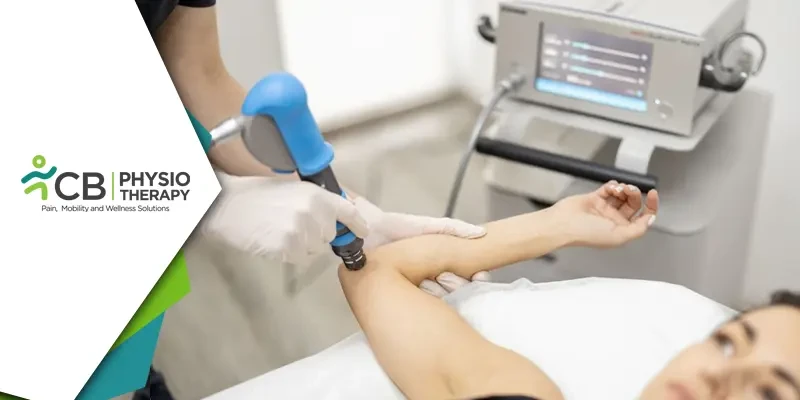Spasticity is a common condition that affects many neurological patients. It is characterized by tightness or stiffness in the muscles, which can cause pain and limit mobility. While many treatment options are available, including medications, surgical interventions, exercise therapy, etc, shockwave therapy is emerging as an innovative non-invasive option for many patients, which has been gaining popularity in the field of physiotherapy in recent years. In this blog, we will discuss how shockwave therapy can be beneficial for patients suffering from spasticity.
Spasticity is a common symptom of neurological conditions such as stroke, cerebral palsy, and multiple sclerosis. It is characterized by muscle stiffness, involuntary muscle contractions, and exaggerated reflexes. Spasticity can be painful and can interfere with daily activities such as walking, dressing, and eating. Current treatment options for spasticity include medications and surgical interventions. However, these treatments are not always effective and can have side effects.
A recent study published in the Journal of Neuro Engineering and Rehabilitation evaluated the effectiveness of shockwave therapy in reducing spasticity in individuals with multiple sclerosis. The study included 20 participants who received shockwave therapy to the calf muscles twice a week for six weeks. The results showed a significant reduction in muscle stiffness and an improvement in gait speed and balance.
Another study published in the European Journal of Neurology evaluated the effectiveness of shockwave therapy in reducing spasticity in individuals with cerebral palsy. The study included 24 participants who received shockwave therapy to the calf muscles twice a week for four weeks. The results showed a significant reduction in muscle stiffness and an improvement in range of motion.
What is Shockwave Therapy?
Shockwave therapy is a non-invasive treatment that uses low-intensity sound waves to promote the healing and repair of tissues. The therapy has been used for decades to treat a variety of musculoskeletal injuries including plantar fasciitis, tendinitis, and chronic pain. However, recent research has also shown that shockwave therapy can be an effective treatment for spasticity in neurological conditions. More recently, it has been found to be effective in treating spasticity in neurological patients. In the case of spasticity, shockwave therapy can help to reduce muscle stiffness and improve the range of motion.
How Does Shockwave Therapy for Spasticity Work?
Shockwave therapy for spasticity works by targeting the affected muscles with low-intensity sound waves. The sound waves stimulate new blood vessels growth and improve existing ones' function. This increases blood flow to the affected muscles, which helps to reduce the tightness and stiffness associated with spasticity.
What to Expect During Shockwave Therapy for Spasticity?
A thorough evaluation is done by your physiotherapist to determine if shockwave therapy is appropriate for your specific condition. Following the evaluation, a comprehensive treatment plan that includes shockwave therapy can be developed by your physiotherapist to ensure the best possible outcomes.
Shockwave therapy for spasticity is a simple and painless procedure. During the procedure, a device is used to deliver low-intensity sound waves to the affected muscles. The treatment usually lasts between 15 and 30 minutes, and there is no downtime or recovery period.
Most patients will require multiple treatments, typically spaced one to two weeks apart. The number of treatments needed will depend on the severity of the spasticity and how well the patient responds to the therapy.
Benefits of Shockwave Therapy for Spasticity
Shockwave therapy for spasticity has several benefits over other treatment options.
First, it is non-invasive, meaning there are no needles, incisions, or anesthesia required. This reduces the risk of complications and eliminates the need for a recovery period.
Second, shockwave therapy for spasticity is a long-lasting solution. Unlike medications, which only work for a short period of time and must be taken regularly, shockwave therapy provides a long-term improvement in muscle function.
Finally, shockwave therapy for spasticity is effective for many neurological patients. Studies have shown that up to 80% of patients who undergo shockwave therapy experience an improvement in muscle function and a reduction in spasticity.
If you are a neurological patient struggling with spasticity, shockwave therapy may be an innovative treatment option for you. The therapy is safe and uses high-energy sound waves to stimulate tissue healing and reduce pain, providing a long-lasting improvement in muscle function.

